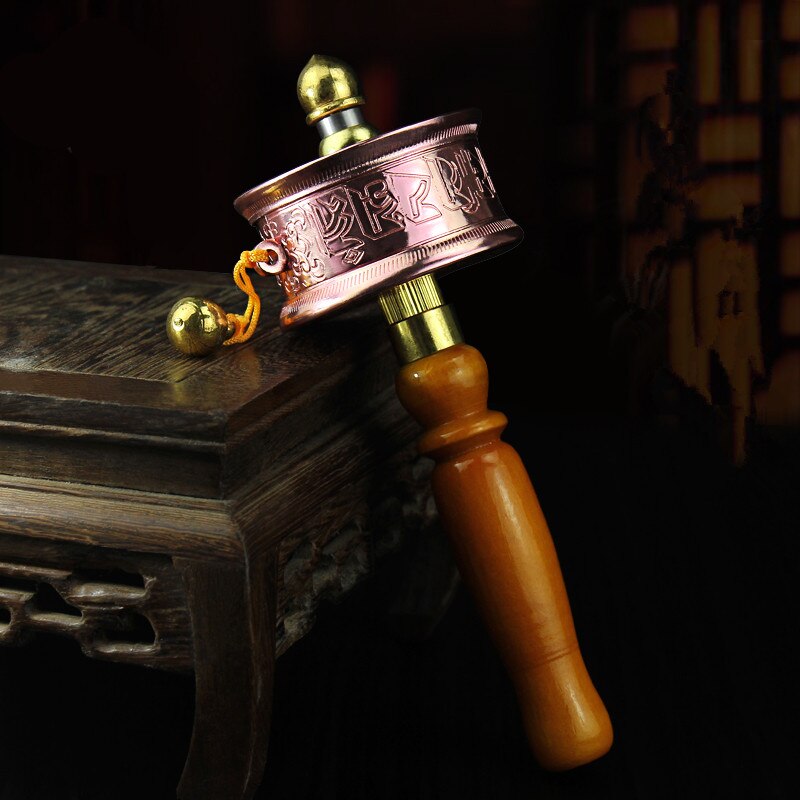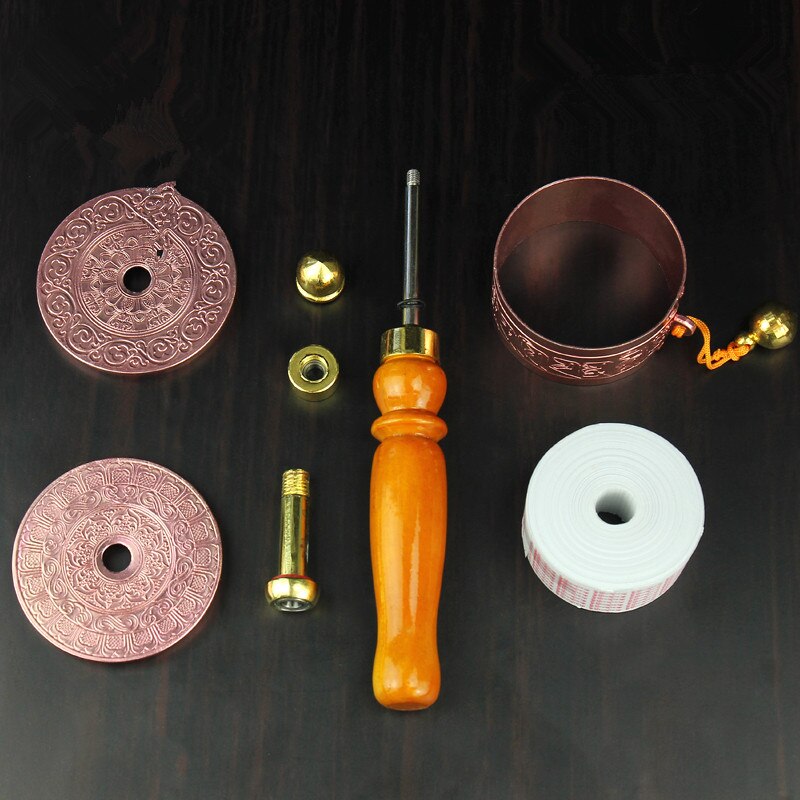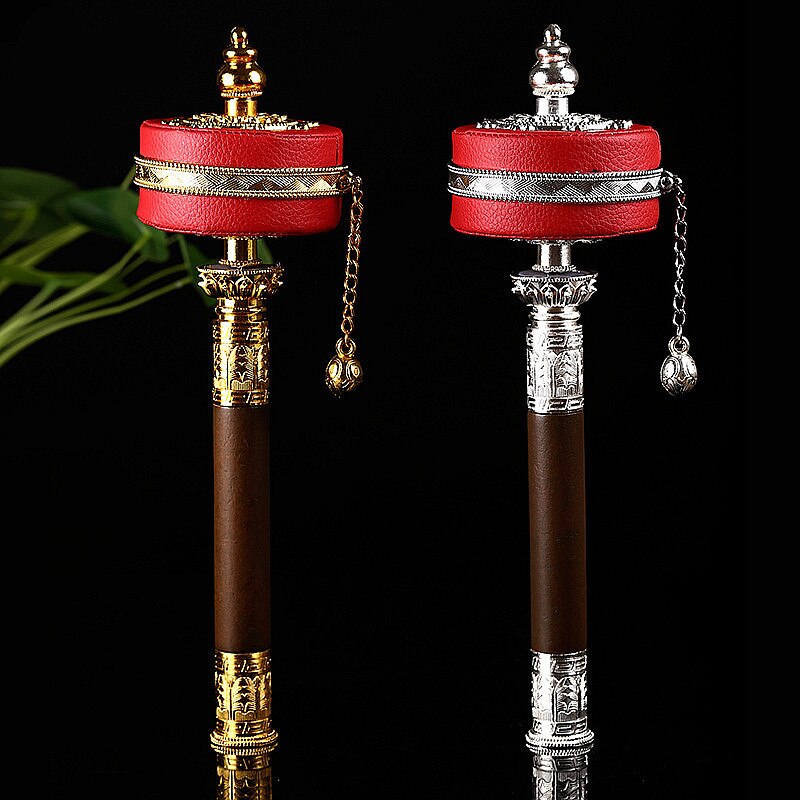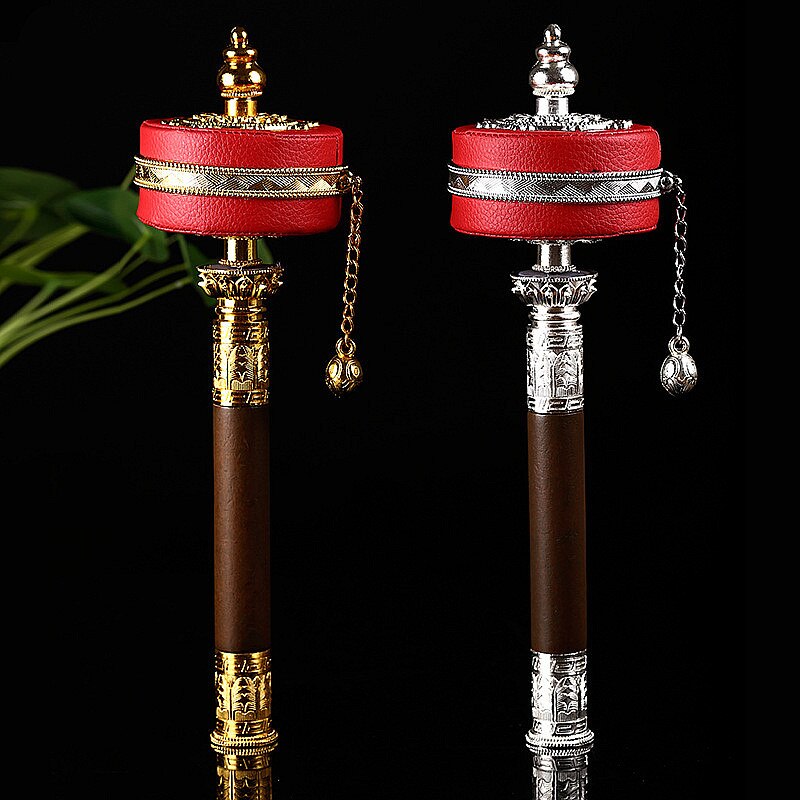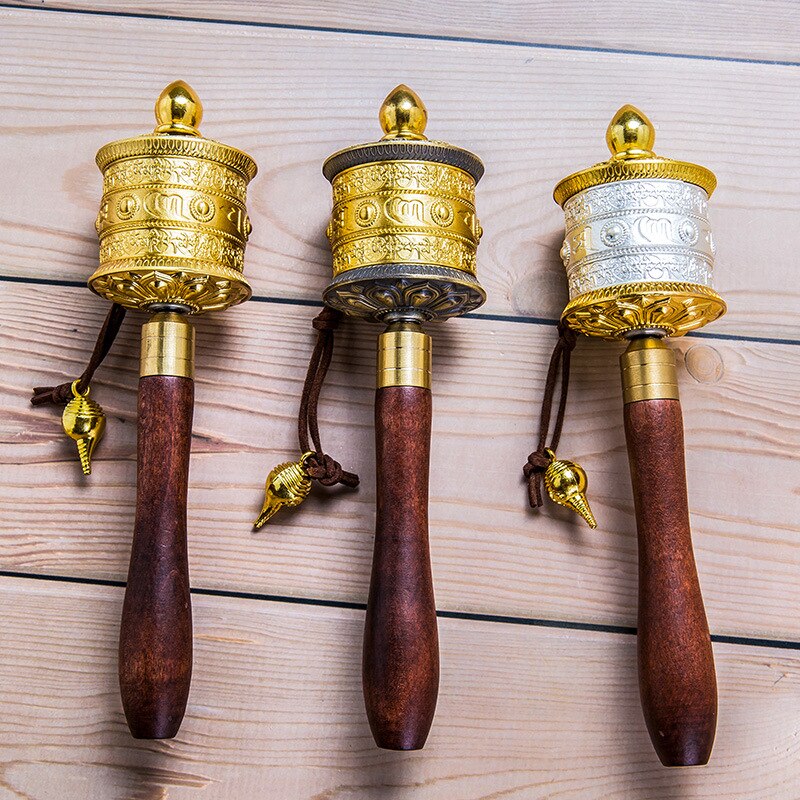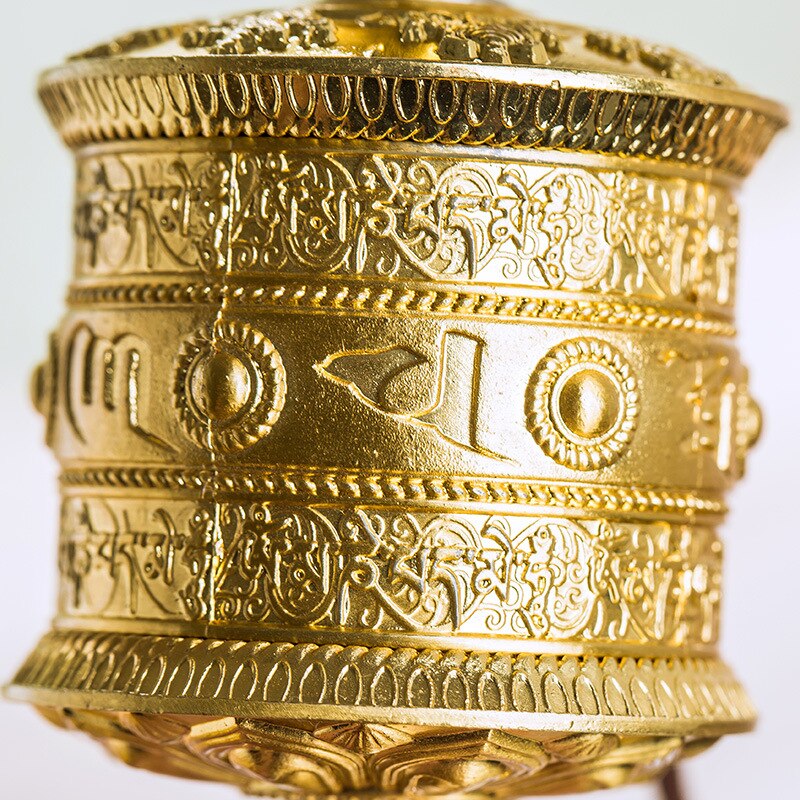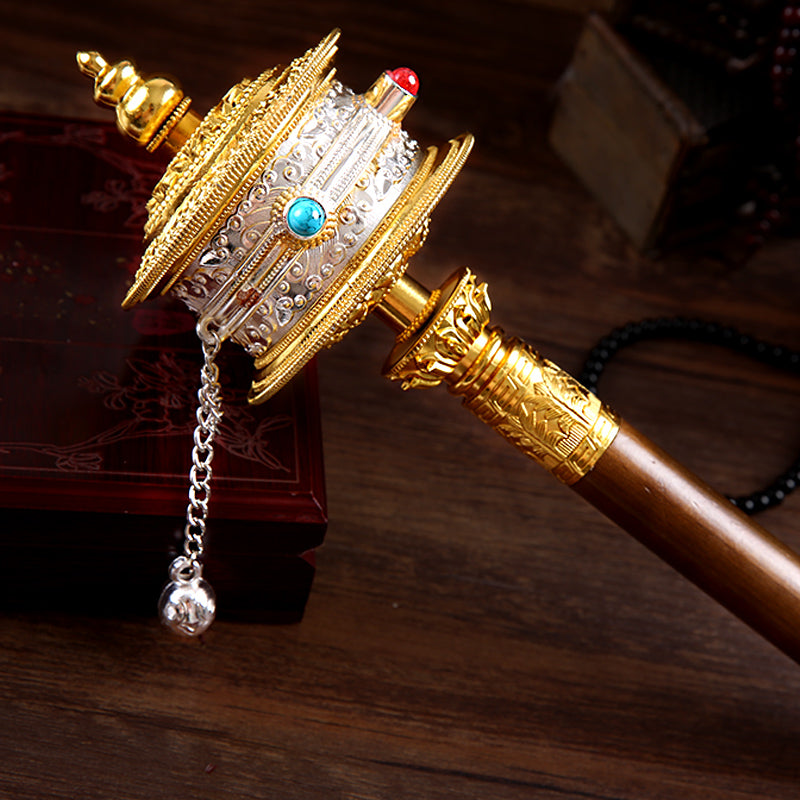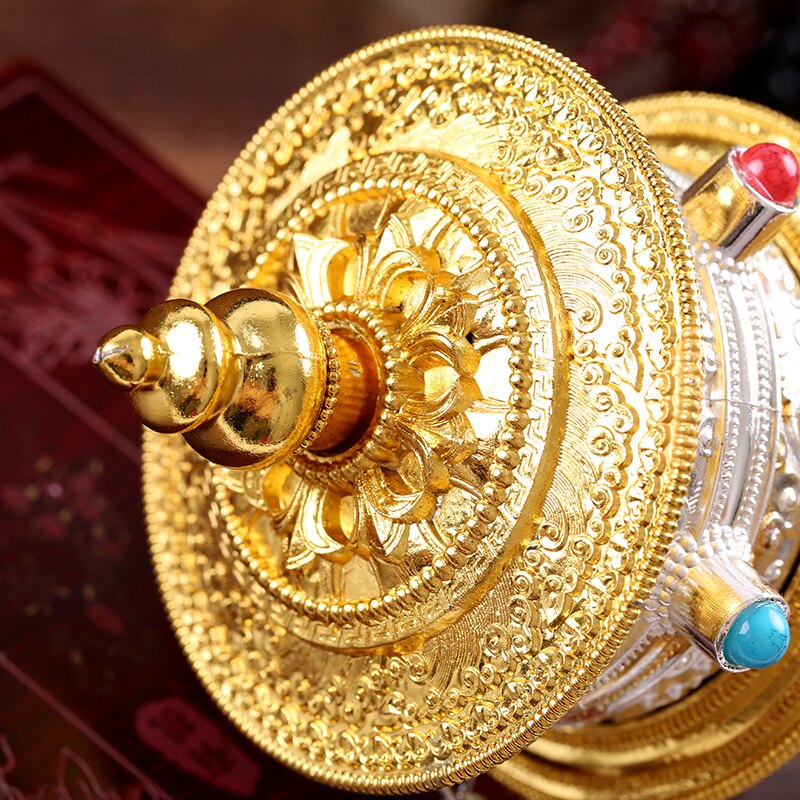Your Cart is Empty
🙏 La livraison est offerte sur tous vos achats ! 🙏
🙏 La livraison est offerte sur tous vos achats ! 🙏
🙏 La livraison est offerte sur tous vos achats ! 🙏
Notre site est chiffré de bout en bout par un protocole SSL et les paiements sont sécurisés via Stripe
Nous offrons la livraison sur tous nos produits partout dans le monde. (Hors DOM-TOM)
Vos commandes sont validées & préparées dans les 24 à 48 heures qui suivent vos achats.
 Livraison Offerte
Livraison Offerte
€149,99 €157,99 You Save 5% (€8,00)
Collections: Prayer wheel
Buddhist prayer wheels are used by multiple Buddhists in the Tibet Autonomous Region every day on top of the world, sometimes for hours. The monks turn the prayer wheels to aggregate benefits, to strengthen all human beings and to cleanse their chakra.
According to the Grand Master Dalai Lama, "To the privilege of human beings, Buddhas and Bodhisattvas manifest themselves in a Tibetan copper six-syllable prayer wheel to cleanse all our negative karmas and blindnesses, and to commit ourselves to achieve the endings of the path of enlightenment. ”
Spinning a Tibetan copper six syllable prayer wheel with a large number of mantras in it is like unveiling thousands of mantras, but it is done in the blink of an eye. The increased profits are also gathered by using prayer wheels powered by wind and water. Therefore the wind or water in contact with the prayer wheel will be consecrated by the prayer wheel and can therefore sacred all that it touches harmful karma.
We frequently observe Buddhists carrying out their expedition with prayer wheels in their hands, or on the occasion of their pilgrimage, they spin a Tibetan copper six syllable prayer wheel in the monasteries and Buddhist centers they roam .
With each movement of the Tibetan Copper Six Syllable Prayer Wheel, the deity whose mantra is inscribed therein flows from the wheel in beings as abundant as mantras. In this way, if there are one billion Manjushri mantras contained in the Tibetan copper six syllable prayer wheel, then one billion Manjushri exhalations will execute with each movement of the Tibetan copper six syllable prayer wheel and benefit. to Buddhists around the world.
Despite this, we imagine that the advantages of turning the wheel of the Tibetan copper six syllable prayer wheel with a determined thought are a hundred times more qualitative than turning it with an evaporated thought.
A Tibetan copper six syllable prayer wheel is a sample of the Buddhist method. This tool allowed the faithful to multiply the number of prayers they recited by countless numbers.
Indeed, the Tibetan copper six syllable prayer wheel is filled with copies of precepts such as that of Avalokiteshvara the mantra om mani padme hum. The mantra is written down on sheets as many times as possible, often hundreds. The bulletin is belted on an axle and covered with a protective cylinder.
Lately, the microfilm process has made it possible to invoke millions, if not hundreds of thousands of prayers in a rotation
The measure of the prayer wheels fluctuates from the modest wheel supported by hand without forgetting the monumental wheel assembled in the pediment of a building, like a revolving pillar.
They are made to be rotated manually, by a gust, rain or blaze. When included in a temple, pilgrims turn around the building clockwise and spin the wheels as they scroll. As a result, they benefit from the advantage of bypassing the sacred monastery and benefiting from the benefits communicated by the Tibetan copper six syllable prayer wheel.
Prayer wheels come in a few sizes: they can be small and attached to a stake, and manually turned; intermediate in size and set in monasteries or monuments, or monumental and constantly set in motion using a water mill. However the small Tibetan copper six syllable hand-held prayer wheel are by far the most popular.
The simple act of touching and turning a six syllable Tibetan copper prayer wheel confers a prodigious purification and accumulates astonishing consecration. We imagine that the more prayers we say, the more reverence we gain, which increases our possibilities of receiving a greater incarnation and eventually joining nirvana.
Having or spinning the Tibetan Copper Six Syllable Prayer Wheel is described as so intense that its influence is compared to that of hundreds of worshipers praying for life.
One of the benefits of the Tibetan Copper Six Syllable Prayer Wheel is that it reflects all the works of the Buddhas and Bodhisattvas of the 10 directions. For the benefit of humans, Buddhas and Bodhisattvas show themselves in the prayer wheel to purify all of our unfavorable chakras and obscurations, and to compel us to actualize the achievements of the path to enlightenment.
Prayer through the Six Syllable Copper Tibetan Prayer Wheel is believed to provide everything a Buddhist demands.
It is strongly believed that rotating the Tibetan Copper Six Syllable Prayer Wheel with grief and dishonor will help you eliminate the four evil deeds, the five actions of immediate retribution, the eight evil views and finally the ten non-virtues. .
Anyone who spins the Tibetan Copper Six Syllable Prayer Wheel during their lifetime should never reincarnate with abnormalities during their lifetime, nor with disabilities such as blindness, deafness, dumbness or infirmity .
Prayer wheel: Mani wheel (a hand-held prayer wheel)
Prayer wheel: Water wheels (turned by flowing water)
Prayer wheel: Fire wheel (turned by the heat of a candle or an electric light)
Prayer wheel: Wind wheel (a kind of prayer wheel turns thanks to the wind)
Prayer wheel: Fixed prayer wheels
Prayer wheel: Electric Dharma Wheels (powered by electric motors)
Spinning this Tibetan copper six syllable prayer wheel and uttering is considered one of the most serious and beneficial acts. Commonly built on the fringes of stupas and monasteries, a large number of Buddhist prayer wheels can measure in the millions for monks to spin as they pass by or when they circle around monasteries or stupas in the city. clockwise.
A famous example of many prayer wheels in one place may be the famous Swayambhunath stupa, where many prayer wheels hang around the huge Swayambhunath stupa The mantra to conjure up when spinning the mills to Buddhist prayers is: "OM MANI PADME HUM" or "OM MANI PEME HUNG".




